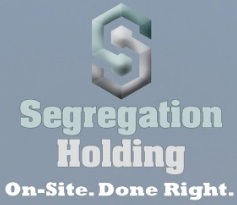What are the different cost segregation methodologies the IRS allows?
Here is a list of the six most common cost segregation methodologies…
- Detailed Engineering Approach from Actual Cost Records
- Detailed Engineering Cost Estimate Approach
- Survey or Letter Approach
- Residual Estimation Approach
- Sampling or Modeling Approach
- “Rule of Thumb” Approach
 For this discussion, we will address the last in this list…the “Rule of Thumb” Approach. According to the IRS Audit Techniques Guide for Cost Segregation, “…the “Rule of Thumb” approach uses little or no documentation and is based on a preparer’s “experience” in a particular industry. For example, a preparer will estimate IRC Sec. 1245 property as a fixed percentage of project cost by relying on previously determined “industry averages” (e.g., 40% for a manufacturing facility). An IRS examiner should view this approach with caution since it lacks sufficient documentation to support its allocation of project costs.”
For this discussion, we will address the last in this list…the “Rule of Thumb” Approach. According to the IRS Audit Techniques Guide for Cost Segregation, “…the “Rule of Thumb” approach uses little or no documentation and is based on a preparer’s “experience” in a particular industry. For example, a preparer will estimate IRC Sec. 1245 property as a fixed percentage of project cost by relying on previously determined “industry averages” (e.g., 40% for a manufacturing facility). An IRS examiner should view this approach with caution since it lacks sufficient documentation to support its allocation of project costs.”
Keep in mind, the IRS “allows” any method of cost segregation the client wants to submit. However, beware those methods requiring little to no documentation! There are many “companies” engaged in “cost segregation” that are in fact only a sales rep pimping cost segregation who uses this “rule of thumb” approach. If audited, the IRS most certainly would disallow any and all assets reallocated to IRC Sec. 1245 tangible personal property. The client, unfortunately, is the one who suffers as a result. With penalties and interest on the understated depreciation a client can end up owing the IRS thousands of dollars.
Don’t risk such an occurrence. Always engage a cost segregation firm with experience in delivering quality engineering-based and conducted cost segregation studies.
Cost segregation delivers results every time it’s applied.
For more information, or to request a free assessment, click Get Refund Now!
[email protected]
Segregation Holding Limited
Facebook
Twitter
or call 972-893-9081 for help today!


